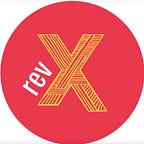Transforming My Classroom: How I brought learning to life with DEEDS
We are back with our next installment of the DEEDS series!
Last time we shared an overview of the instructional framework RevX uses to create identity-affirming learning experiences. Many of you wanted to know more about how to apply some of the practices in your community, so this time we are joined by Cindy Garcia, 2nd-grade teacher and RevX facilitator. Below, Cindy shares what it was like to implement the DEEDS framework for her first module on Reducing Waste!
When I started working with RevX, it was before we had many of the tools and resources we have now. I wanted my teaching to feel far from traditional ways, more rooted in the real world and motivating for my learners, but I didn’t know how to start. I felt nervous to try something so new, but the optimistic side of me was eager to give it a try! After learning more about the DEEDS process, I was still worried I wouldn’t have control of my class, so I continued to review the process feeling anxious–as I’m sure some of you may have felt if you have never tried something like this before!
However, with continuous practice and great support from my team, I became confident and willing to continue implementing the DEEDS process for my first RevX module. In the following videos, I share some tips, resources, and reflections on what it was like implementing my first module on Reducing Waste.
The first phase, DISCOVER, is the “hook” or the Ah-ha! moment, where learners identify a challenge and its root causes. This is the perfect opportunity to get them motivated by expressing excitement along with them and letting them know they can make a change in their community no matter how old they are.
During this phase, learners explore images from their discovery activity in order to build their curiosity around the problem and how they might solve it. As they brainstorm questions about their discovery, they use the Question Formulation Technique (QFT) to compose a Challenge Question that will help their investigation throughout the following phase.
By the end of the Discover phase, students feel conviction about the challenge they are working to improve or solve. They move through their school day with eyes wide open, noticing their environment, and energized around making an impact in their community–a favorite time.
Next up is EXAMINE! This is when the learners transform into thoughtful researchers. They use the questions they listed during the Discover phase to guide their research on the causes and effects of the challenge. Facilitators gather rich, intentional texts (articles, videos, and images) to help learners build their vocabulary and learn about the challenge.
During the Examine phase, learners practice their literacy skills by answering questions and writing about what they’ve learned from the texts they interacted with. They also use this information to analyze the data so they can present their learning to experts during their interviews. This phase is also an excellent opportunity to engage learners in hands-on experiences to showcase their research. It’s all about having fun learning!
As students wrap up the Examine phase, the energy shifts from information gathering to problem-solving, an exciting time in the classroom!
The ENGINEER Phase is about transitioning from thoughtful researchers to creators, designers, and innovators! Learners refer to the information they investigated to help them plan ideas to solve or improve their challenge. Learners can feel like an engineer by exploring the process of identifying a hypothesis, testing out their theory, and improving their ideas. They collaborate with industry experts that will help them make their solutions better.
For this module, the students created a movie to explain and motivate the school community to recycle. They explored what it was like to be filmmakers and producers making an informative and persuasive film. We ended the phase by figuring out where to show our movie and reflecting on the process.
DO is the phase all about implementing the solution in the real world. We put our implementation plan into practice and got to work collecting more data and feedback to find out if our solutions worked.
In our case, the solution was unsuccessful based on the data we collected, but that’s okay! It was an opportunity for our learners to practice doing real, impactful work and making necessary adjustments. Learners still felt like real changemakers and even continued to apply their experiences outside of school.
The final phase, SHARE, is an interactive experience where learners present their learning journey and growth to community members, including peers, school staff, and families.
I say this in the video, but it bears repeating, prepare yourself for some major moments of pride! You can see their eagerness to prepare for their BIG DAY! They take on the responsibility to organize themselves, give their peers feedback, and ensure their parents and members of their communities are there to learn from them. It’s most apparent in this phase how much the students have transformed personally and grown academically–it’s truly special.
There you have it, reflections on my first module in video form. Watching them back, I remember how foreign the process seemed and feeling unsure about how things would go. What a difference a module makes! Now I can’t imagine teaching without the DEEDS framework etched in my mind.
Let us know what you discovered (see what I did there?) while trying some of these methods in your school!
